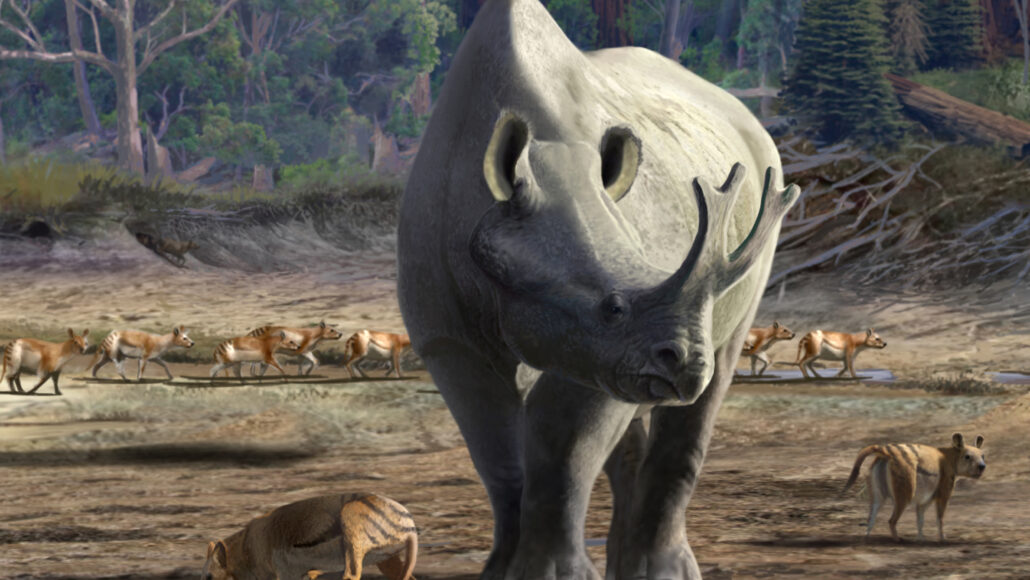‘Thunder beast’ fossils show how some mammals might have gotten big
Rather than a straightforward march, evolving to be big sometimes involved getting smaller

Extinct brontotheres like Megacerops kuwagatarhinus (illustrated) were once titans weighing a metric ton or more. But the mammals’ evolutionary history wasn’t a straight path to gigantism.
Oscar Sanisidro © 2018, KU Biodiversity Institute/The University of Kansas